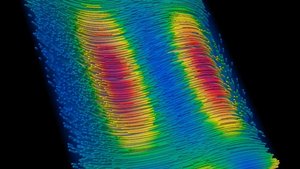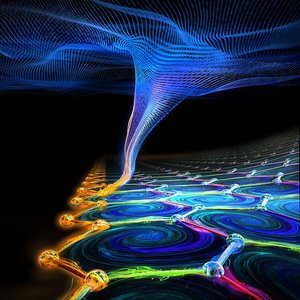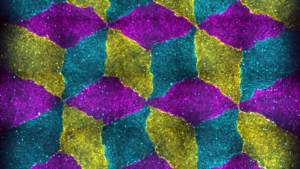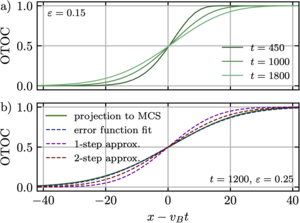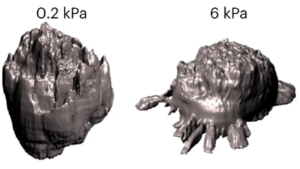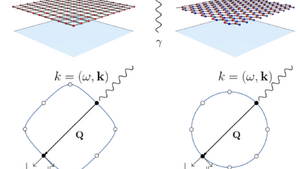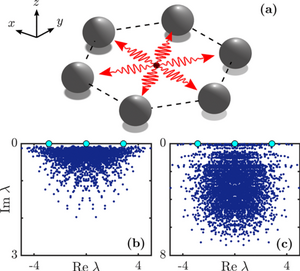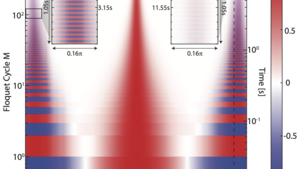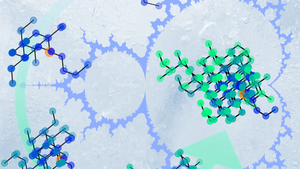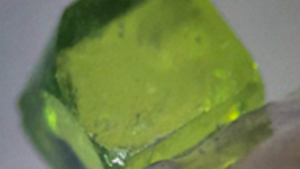
Highlights
Publication Highlights
Understanding 3D Active Fluids Through Mathematical Supercomputing
Active matter physics is a cornerstone theory to understand biological phenomena across multiple scales, ranging from cellular movement to tissue morphogenesis and the flocking behavior of animals. One such fascinating class of active matter are active fluids. These are densely packed, soft substances whose component parts can flow independently and operate by dissipating energy at the microscopic scale to perform directed motion. Although this offers a general framework that can be applied to practically all of biology, active fluids are incredibly challenging to understand in three dimensions due to increased mathematical and computational complexity. Given the technical obstacles and a lack of the necessary supercomputing scientific software for 3D investigations, only two-dimensional models of active fluids were investigated in the previous decade.
In a current study, Frank Jülicher, director at the Max Planck Institute of the Complex Systems, investigates, together with the research group of Ivo Sbalzarini, TU Dresden Professor in the Center for Systems Biology Dresden (CSBD), Research Group Leader at the Max Planck Institute of Molecular Cell Biology and Genetics (MPI-CBG), and Dean of the Faculty of Computer Science at the TU Dresden, how an active fluid behaves in a three-dimensional environment. Recent experiments that directly correspond to the three-dimensional world we live in, have observed that microtubules and kinesin motor protein mixtures can flow on their own in different directions, but a comprehensive theoretical model explaining these observations and how to control them was missing. Abhinav Singh, the first author of the study, explains: “Our most important discovery is that boundary conditions, which are frequently overlooked in ideal physical models, are crucial in the formation of instabilities in active matter. In simple terms, this means that the active material can latch onto and interact with the boundary or surface it is against, and then move in two ways: in the direction of alignment (in-plane) or perpendicular to the alignment of polymers (out-of-plane). Whether it is pulled or pushed by its internal motors, and the way molecules orient at the edges, dictate the movement. Interestingly, we discovered a unique 3D 'rippling' or 'wrinkling' effect that corresponds directly to the observed puzzling behavior of microtubules when they are under a stretching force created by motors called kinesins. These results were confirmed through rigorous mathematical analysis and unprecedented supercomputing codes of novel numerical techniques, marking a significant leap in our understanding of active biological processes.”
“These findings expand our understanding of the behavior of active matter and move us one step closer to unraveling the beautiful complexity of morphogenesis,” concludes Ivo Sbalzarini, who supervised the study. “Our findings and software contributions in OpenFPM will be instrumental for physicists, biologists, and materials scientists who are looking into the behavior of active fluids made up of living materials. This new understanding can enhance the manipulation and control of active fluids, paving the way for a range of applications, from microfluidic devices to drug delivery systems and novel material designs. However, further research is necessary to validate our findings in various real-world scenarios.”
(Highlight text by Katrin Boes, MPI-CBG)
Abhinav Singh, Quentin Vagne, Frank Jülicher, and Ivo F. Sbalzarini, Phys. Rev. Research 5, L022061 (2023)
Read moreIn a current study, Frank Jülicher, director at the Max Planck Institute of the Complex Systems, investigates, together with the research group of Ivo Sbalzarini, TU Dresden Professor in the Center for Systems Biology Dresden (CSBD), Research Group Leader at the Max Planck Institute of Molecular Cell Biology and Genetics (MPI-CBG), and Dean of the Faculty of Computer Science at the TU Dresden, how an active fluid behaves in a three-dimensional environment. Recent experiments that directly correspond to the three-dimensional world we live in, have observed that microtubules and kinesin motor protein mixtures can flow on their own in different directions, but a comprehensive theoretical model explaining these observations and how to control them was missing. Abhinav Singh, the first author of the study, explains: “Our most important discovery is that boundary conditions, which are frequently overlooked in ideal physical models, are crucial in the formation of instabilities in active matter. In simple terms, this means that the active material can latch onto and interact with the boundary or surface it is against, and then move in two ways: in the direction of alignment (in-plane) or perpendicular to the alignment of polymers (out-of-plane). Whether it is pulled or pushed by its internal motors, and the way molecules orient at the edges, dictate the movement. Interestingly, we discovered a unique 3D 'rippling' or 'wrinkling' effect that corresponds directly to the observed puzzling behavior of microtubules when they are under a stretching force created by motors called kinesins. These results were confirmed through rigorous mathematical analysis and unprecedented supercomputing codes of novel numerical techniques, marking a significant leap in our understanding of active biological processes.”
“These findings expand our understanding of the behavior of active matter and move us one step closer to unraveling the beautiful complexity of morphogenesis,” concludes Ivo Sbalzarini, who supervised the study. “Our findings and software contributions in OpenFPM will be instrumental for physicists, biologists, and materials scientists who are looking into the behavior of active fluids made up of living materials. This new understanding can enhance the manipulation and control of active fluids, paving the way for a range of applications, from microfluidic devices to drug delivery systems and novel material designs. However, further research is necessary to validate our findings in various real-world scenarios.”
(Highlight text by Katrin Boes, MPI-CBG)
Abhinav Singh, Quentin Vagne, Frank Jülicher, and Ivo F. Sbalzarini, Phys. Rev. Research 5, L022061 (2023)
Publication Highlights
Towards the realisation of chiral spin liquids and non-Abelian anyons in quantum simulators
Chiral spin liquids are one of the most fascinating phases of matter ever imagined by physicists. These exotic liquids exhibit quasi-particles known as non-Abelian anyons that are neither bosons nor fermions, the manipulation of which could allow for the realisation of a universal quantum computer. Despite intense efforts in condensed matter physics, discovering such a phase in Nature remains an outstanding challenge at the forefront of modern research.
From a theoretical point of view, chiral spin liquids emerge in a simple model that was imagined by Kitaev in 2006, and which allows revealing their properties using analytical tools. Remarkably, recent advances in the design of quantum simulators open a possible path for the first experimental realisation of the original Kitaev model, hence suggesting that chiral spin liquids (including their exotic quasi-particles) can be studied and manipulated in a highly-controlled experimental environment.
Recent work by an international collaboration involving BoYe Sun and Nathan Goldman (ULB, Brussels), Monika Aidelsburger (LMU, Munich), and Marin Bukov (Max Planck Institute for the Physics of Complex Systems and Sofia University) proposes a realistic implementation of the Kitaev model in quantum simulators. Based on a precise pulse sequence, their system is shown to host a chiral spin liquid with non-Abelian anyons. The authors describe practical methods to probe the striking properties of these exotic states. In particular, their methods unambiguously reveal the topological heat current that flows on the edge of the system: a hallmark signature of the non-Abelian anyons that emerge on the edge of chiral spin liquids.
This work paves the way for the quantum simulation of chiral spin liquids, offering an appealing alternative to their experimental investigation in quantum materials.
Bo-Ye Sun, Nathan Goldman, Monika Aidelsburger, and Marin Bukov, Phys. Rev. X Quantum 4, 020329 (2023).
Read moreFrom a theoretical point of view, chiral spin liquids emerge in a simple model that was imagined by Kitaev in 2006, and which allows revealing their properties using analytical tools. Remarkably, recent advances in the design of quantum simulators open a possible path for the first experimental realisation of the original Kitaev model, hence suggesting that chiral spin liquids (including their exotic quasi-particles) can be studied and manipulated in a highly-controlled experimental environment.
Recent work by an international collaboration involving BoYe Sun and Nathan Goldman (ULB, Brussels), Monika Aidelsburger (LMU, Munich), and Marin Bukov (Max Planck Institute for the Physics of Complex Systems and Sofia University) proposes a realistic implementation of the Kitaev model in quantum simulators. Based on a precise pulse sequence, their system is shown to host a chiral spin liquid with non-Abelian anyons. The authors describe practical methods to probe the striking properties of these exotic states. In particular, their methods unambiguously reveal the topological heat current that flows on the edge of the system: a hallmark signature of the non-Abelian anyons that emerge on the edge of chiral spin liquids.
This work paves the way for the quantum simulation of chiral spin liquids, offering an appealing alternative to their experimental investigation in quantum materials.
Bo-Ye Sun, Nathan Goldman, Monika Aidelsburger, and Marin Bukov, Phys. Rev. X Quantum 4, 020329 (2023).
Publication Highlights
The tissue collider
Physics has a long tradition of learning about fundamental interactions by making particles collide against each other. Could a similar approach be applied to biological systems? Work by Ricard Alert of the Max Planck Institute for the Physics of Complex Systems and collaborators shows what can be learnt about the mechanics of living tissues by making them collide against each other. In experiments, the researchers placed cell monolayers on a substrate and allowed them to expand and collide. The work first characterised how two tissues change shape upon collision. The researchers discovered that denser tissues, with more cells per unit area, can mechanically displace less dense tissues. Based on their calculations, the team proposes that this displacement arises because denser tissues have a higher pressure, which allows them to push on other tissues. This theory enables measurements of the elastic properties of the tissues just from their displacements upon collision. The researchers then analyzed collisions between three tissues. Surprisingly, they found that these three-tissue events are not simply a superposition of two-tissue collisions. Instead, some cells speed up as if trying to squeeze between the two other tissues. Finally, they used all these collision principles to design and assemble specific tissue patterns, similar to tile patterns, like the diamond pattern in the image. Ultimately, these results might help engineering tissue composites for implants, as well as understanding and controlling tissue interactions during embryonic development or wound healing. In all these situations, tissues grow and collide, either merging into a single tissue or establishing clear boundaries between different tissues and organs.
Matthew A. Heinrich*, Ricard Alert*, Abraham E. Wolf*, Andrej Košmrlj, and Daniel J. Cohen, Nat. Commun. 13, 4026 (2022).
Read moreMatthew A. Heinrich*, Ricard Alert*, Abraham E. Wolf*, Andrej Košmrlj, and Daniel J. Cohen, Nat. Commun. 13, 4026 (2022).
Publication Highlights
From Dual Unitarity to Generic Quantum Operator Spreading
Chaotic quantum many-body systems hide information non-locally in many degrees of freedom via a dynamical process called scrambling. Understanding the capacity of quantum systems to scramble information is a crucial requirement for the design and control of quantum computing platforms as well as being intimately related to questions of thermalisation and quantum chaos.
In recent years, dual-unitary circuits have emerged as minimal models for quantum many-body dynamics in which the dynamics are chaotic yet analytically tractable. However, despite their chaoticity these circuits display behaviour that is in many respects non-generic. Michael Rampp, Roderich Moessner, and Pieter Claeys from the Max Planck Institute for the Physics of Complex Systems have investigated the effect of weakly broken dual-unitarity on the spreading of local operators, a particular probe of information scrambling. They recover two universal features of ergodic quantum spin chains absent in dual-unitary circuit dynamics: a butterfly velocity smaller than the light-cone velocity and a diffusively broadening operator front. They present a physical picture for these effects through a discrete path-integral formalism, allowing for a quantitative connection between the microscopic properties of these gates and the macroscopic butterfly velocity and diffusion constant.
M. A. Rampp, R. Moessner, P. W. Claeys, Phys. Rev. Lett. 130, 130402 (2023).
Read moreM. A. Rampp, R. Moessner, P. W. Claeys, Phys. Rev. Lett. 130, 130402 (2023).
Publication Highlights
Cancer cells move to stiff environments as living droplets
Recent work by Ricard Alert of the Max Planck Institute for the Physics of Complex Systems and his collaborators uncovered a similarity between liquid droplets and cell groups, revealing that surface tension helps cells to migrate towards stiffer environments. The new work proposes that this process, called durotaxis and which was defined in the field of cell biology, can be accounted for quite precisely with the physics of wetting. This new insight could help us to understand how cancer cells disseminate across tissues with different rigidity in our body.
M. E. Pallarès*, I. Pi-Jaumà*, I. C. Fortunato, V. Grazu, M. Gómez-González, P. Roca-Cusachs, J. M. de la Fuente, R. Alert, R. Sunyer, J. Casademunt, and X. Trepat. Nat. Phys. 19, 279 (2023).
Read moreM. E. Pallarès*, I. Pi-Jaumà*, I. C. Fortunato, V. Grazu, M. Gómez-González, P. Roca-Cusachs, J. M. de la Fuente, R. Alert, R. Sunyer, J. Casademunt, and X. Trepat. Nat. Phys. 19, 279 (2023).
Publication Highlights
Non-Fermi-Liquid Behavior from Cavity Electromagnetic Vacuum Fluctuations
In a number of different behaviour, so-called non-Fermi-liquid behaviour appears due to strong correlations between electrons. The standard theoretical scenario relies on emergent collective bosonic modes with strong critical fluctuations that destroy the electronic quasiparticles. Due to the complexity of the actual material, it is difficult to determine the microscopic origin of the relevant bosonic modes systematically. Peng Rao and Francesco Piazza of the Max Planck institute for the Physics of Complex Systems have now shown that cavity quantum electrodynamics within two-dimensional materials is ideal to implement non-Fermi-liquid behaviour. The emergent bosonic modes belong here to the vacuum electromagnetic field, a microscopic degree of freedom of which the dynamics and coupling with electrons can be controlled by cavity engineering.
P. Rao and F. Piazza, Phys. Rev. Lett. 130, 083603 (2023)
Read moreP. Rao and F. Piazza, Phys. Rev. Lett. 130, 083603 (2023)
Publication Highlights
Symmetry-induced decoherence-free subspaces
Preservation of coherence is a fundamental, yet subtle, phenomenon in open systems. We uncover its relation to symmetries respected by the system Hamiltonian and its coupling to the environment. We discriminate between local and global classes of decoherence-free subspaces for many-body systems through the introduction of “ghost variables”. The latter are orthogonal to the symmetry and the coupling to the environment depends solely on them. Constructing them is facilitated in classical phase space and can be transferred to quantum mechanics through the equivalent role that Poisson and Lie algebras play for symmetries in classical and quantum mechanics, respectively. Examples are given for an interacting spin system.
J. Dubois, U.Saalmann, and J.M. Rost, Phys. Rev. Research 5, L012003 (2023)
Read moreJ. Dubois, U.Saalmann, and J.M. Rost, Phys. Rev. Research 5, L012003 (2023)
Publication Highlights
Discrete time crystal created by two-frequency external driving
Time crystals are a freshly discovered nonequilibrium phase of matter without an equilibrium counterpart, stabilized by external periodic drives and characterized by broken spatiotemporal symmetry. Scientists from the Nonequilibrium Quantum Dynamics group at the Max Planck Institute for the Physics of Complex Systems, together with collaborators at the KTH Royal Institute of Technology and at UC Berkeley, created a critical time crystal in a system of long-range interacting nuclear spins. Designing a novel two-frequency external driving protocol allowed the scientists to monitor the time-crystalline behavior continuously (avoiding the wave function collapse), and take real-time movies displaying the formation, lifetime, and meltdown of this exotic phase of matter. The experimental platform used offers unprecedented clarity and measurement throughput, which turned out fundamental for determining the boundaries of the time-crystalline phase, and investigating in detail the melting dynamics of the time crystal as it gradually heats up.
W. Beatrez et al., Nat. Phys. 19, 407 (2023)
Read moreW. Beatrez et al., Nat. Phys. 19, 407 (2023)
Publication Highlights
Dynamical fractal discovered in clean magnetic crystal
A new type of fractal has been discovered in a class of materials called spin ices—famous, among other reasons, for their emergent magnetic monopole excitations. Spin ice materials are some of the most researched and best understood topological magnets. Nevertheless, the unusual dynamical properties of spin ice have been puzzling scientists for almost two decades. An international research team, including Jonathan N. Hallén and Roderich Moessner of the Max Planck Institute for the Physics of Complex Systems, has now shown that the dynamical rules governing the motion of the magnetic monopoles constrain these to move on fractal structures. By hosting the monopole motion, the fractals cause the peculiar dynamical behaviours observed in spin ice materials.
The discovery was surprising because the fractals were seen in a clean three-dimensional crystal, where they would not be expected conventionally. Even more remarkably, the fractals are visible in dynamical properties of the crystal, and hidden in static ones. The capacity of spin ice to exhibit such striking phenomena makes the team hopeful that spin ice will allow further surprising discoveries in the cooperative dynamics of even simple topological many-body systems. More details can be found in a press release (PDF).
J. N. Hallén et al., Science 378, 1218 (2022)
See also the related Science Perspective article by F. Flicker.
Read moreThe discovery was surprising because the fractals were seen in a clean three-dimensional crystal, where they would not be expected conventionally. Even more remarkably, the fractals are visible in dynamical properties of the crystal, and hidden in static ones. The capacity of spin ice to exhibit such striking phenomena makes the team hopeful that spin ice will allow further surprising discoveries in the cooperative dynamics of even simple topological many-body systems. More details can be found in a press release (PDF).
J. N. Hallén et al., Science 378, 1218 (2022)
See also the related Science Perspective article by F. Flicker.
Publication Highlights
Recipe for a spin-orbital liquid
An international team of scientists including Roderich Moessner of the Max Planck Institute for the Physics of Complex Systems has observed an exotic quantum state of matter: a spin-orbital liquid formed on the pyrochlore oxide Pr2Zr2O7. Here, both spin and orbital degrees of freedom remain dynamic down to extremely low temperature. It is known from the long history of condensed matter physics that suppressing orbital order down to low temperatures is extremely difficult, a precondition for the next tricky step of obtaining a spin-orbital liquid state. Pr2Zr2O7 serves as a rare counterexample in which spins and orbitals are interlocked, so that fluctuation of one necessitates fluctuation of the other. More details can be found in a press release (PDF).
N. Tang, Y. Grisenko, K. Kimura et al., Nat. Phys. (2022)
See also the related Nat. Phys. News & Views article by V. S. Zapf, M. Lee, and P. F. S. Rosa.
Read moreN. Tang, Y. Grisenko, K. Kimura et al., Nat. Phys. (2022)
See also the related Nat. Phys. News & Views article by V. S. Zapf, M. Lee, and P. F. S. Rosa.

